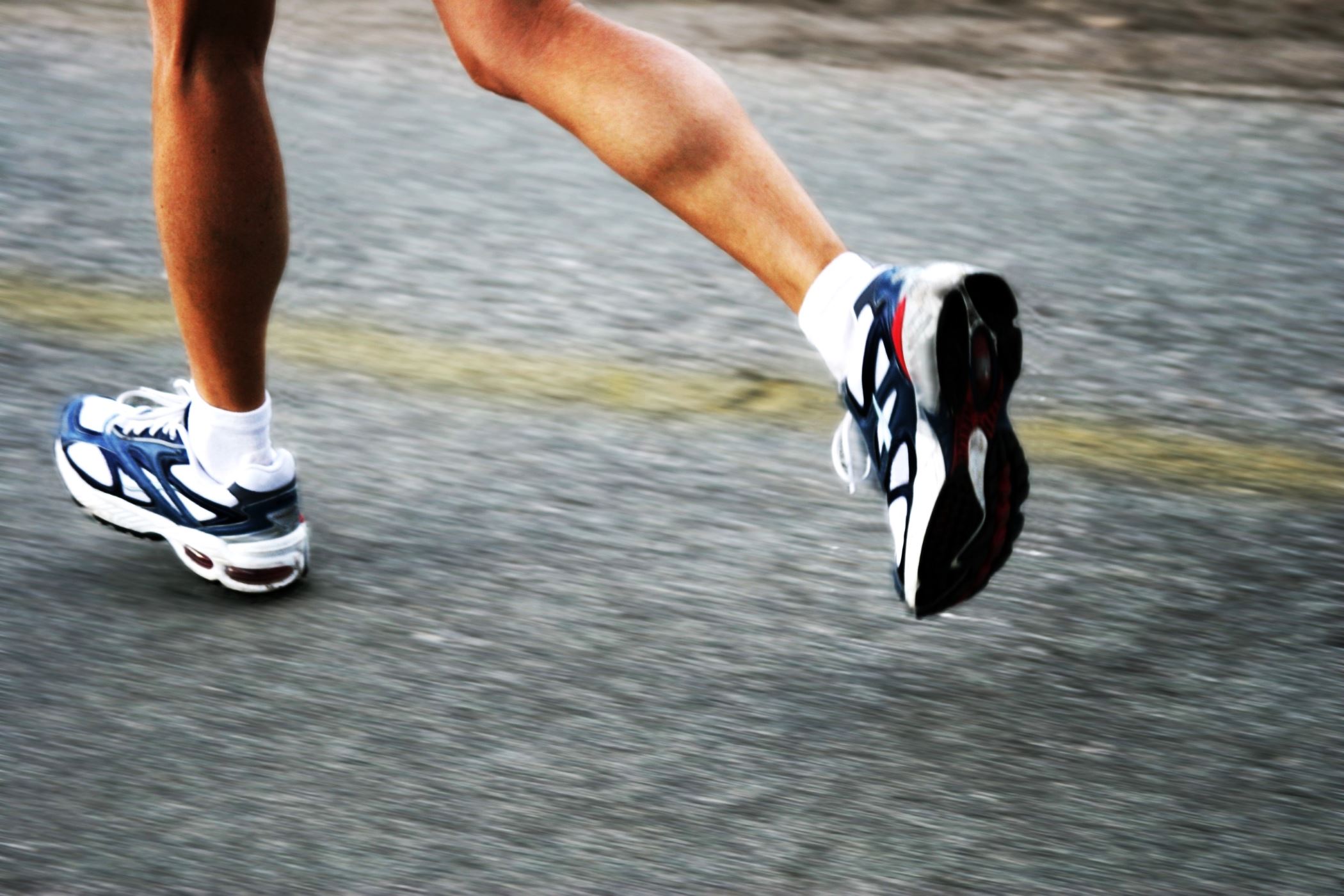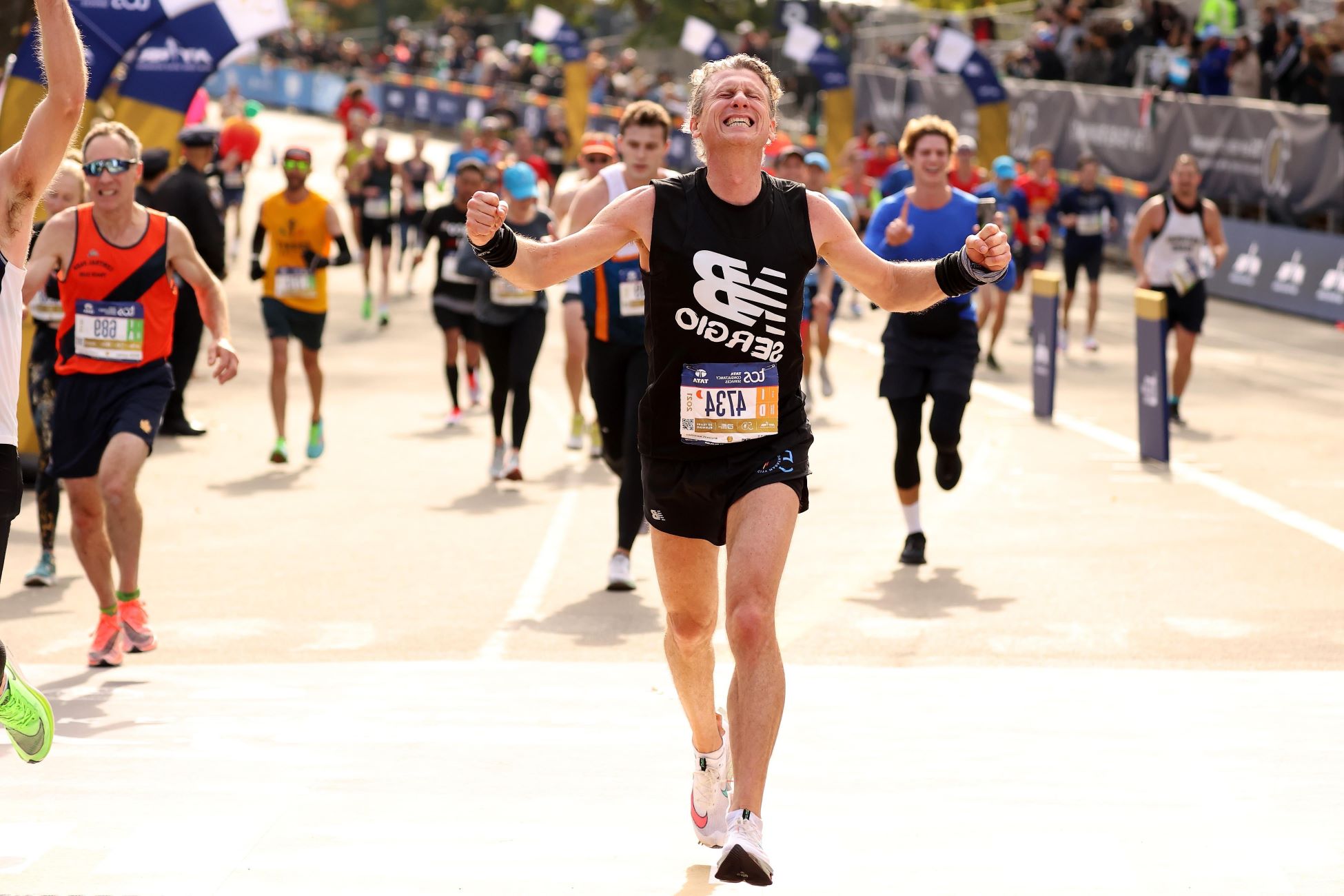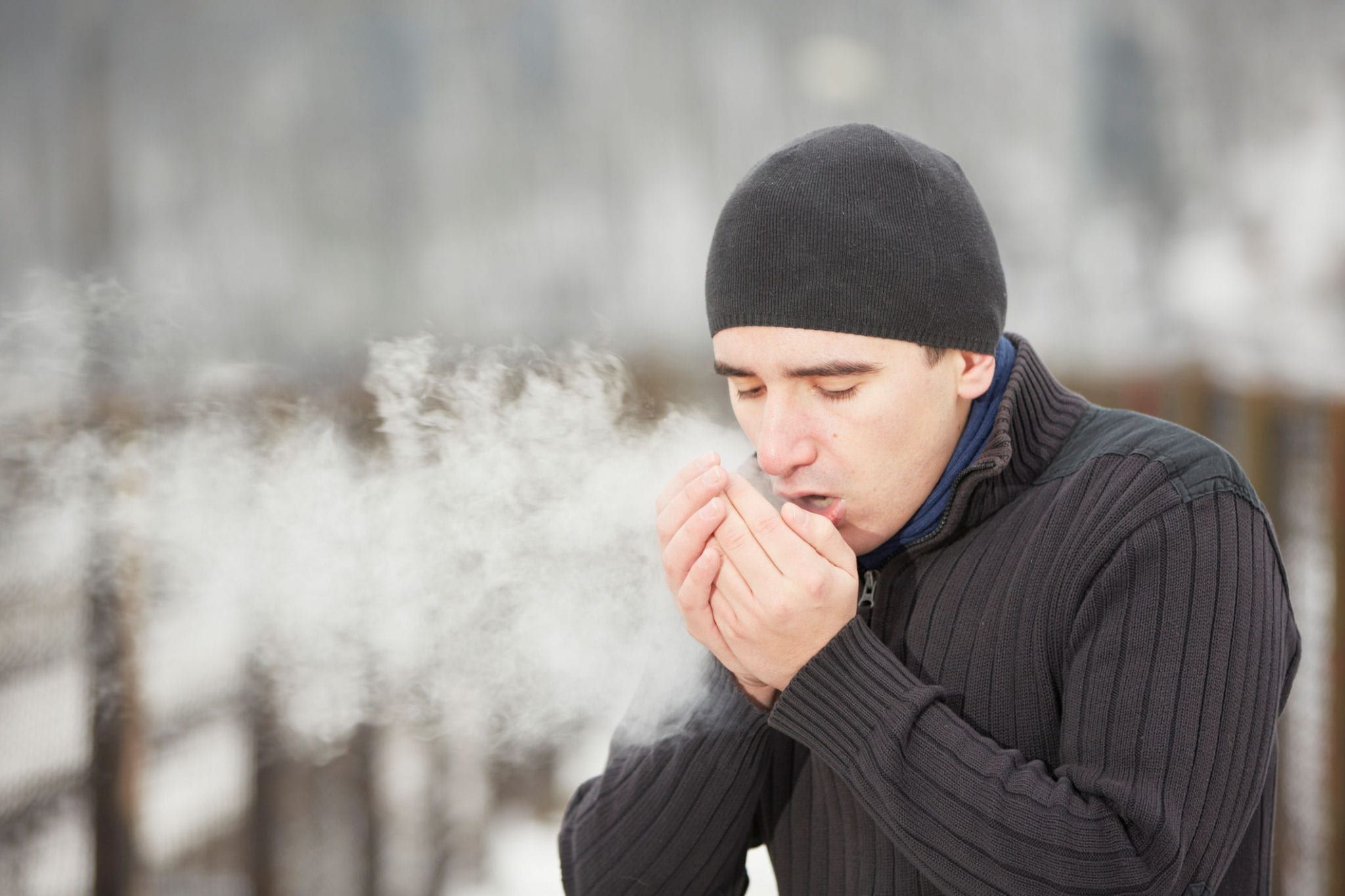Home>Health & Nutrition>Injury Prevention>The Impact Of Running On Meniscal Cysts


Injury Prevention
The Impact Of Running On Meniscal Cysts
Published: February 25, 2024
Learn how running affects meniscal cysts and discover injury prevention strategies for maintaining joint health. Explore the impact of running on meniscal cysts and ways to prevent injury.
(Many of the links in this article redirect to a specific reviewed product. Your purchase of these products through affiliate links helps to generate commission for Therunningadvisor.com, at no extra cost. Learn more)
Table of Contents
Introduction
Injury prevention is a crucial aspect of maintaining a healthy and active lifestyle, especially for individuals who engage in physical activities such as running. One common concern among runners is the potential impact of their chosen exercise on the development of meniscal cysts. Understanding the relationship between running and meniscal cysts is essential for promoting injury prevention and overall well-being.
Meniscal cysts are fluid-filled sacs that develop within the knee joint, often in association with meniscal tears or degenerative changes. These cysts can cause discomfort, pain, and limited mobility, affecting an individual's ability to engage in physical activities. The prevalence of meniscal cysts among runners has sparked interest in exploring the potential connection between running and the development of these cysts.
By delving into the intricacies of meniscal cysts and their association with running, individuals can gain valuable insights into injury prevention strategies and proactive measures to safeguard their knee health. This article aims to provide a comprehensive understanding of meniscal cysts, their symptoms, diagnosis, treatment options, and most importantly, practical steps to prevent their occurrence while engaging in the invigorating activity of running.
Understanding the impact of running on meniscal cysts involves examining the biomechanical stresses exerted on the knee joint during running, as well as the potential risk factors that may contribute to the development of these cysts. By shedding light on these aspects, individuals can make informed decisions regarding their running routines and implement preventive measures to minimize the risk of meniscal cysts.
As we delve deeper into the intricate relationship between running and meniscal cysts, it becomes evident that proactive measures and a comprehensive understanding of injury prevention are essential for runners to continue enjoying the numerous benefits of this physical activity while safeguarding their knee health.
Read more: The Impact Of Running On Baker’s Cyst
Understanding Meniscal Cysts
Meniscal cysts are fluid-filled sacs that develop within the knee joint, often in association with meniscal tears or degenerative changes. These cysts can vary in size and are typically located adjacent to the meniscus, a C-shaped cartilage structure that acts as a cushion and stabilizer within the knee joint. The development of meniscal cysts is often linked to underlying meniscal injuries or degenerative conditions, which can lead to the accumulation of synovial fluid within the cystic structure.
The formation of meniscal cysts is commonly observed in individuals with meniscal tears, where the tear allows the synovial fluid to escape from the joint space and accumulate in the surrounding tissue, giving rise to the cyst. Additionally, degenerative changes within the meniscus, often associated with aging or repetitive stress, can contribute to the development of these cysts. The presence of a meniscal cyst can exert pressure on the surrounding structures within the knee joint, leading to discomfort, pain, and restricted mobility.
Understanding the characteristics and implications of meniscal cysts is essential for individuals, particularly runners, who are keen on preserving their knee health. The symptoms associated with meniscal cysts can vary, with some individuals experiencing localized pain, swelling, and a sensation of instability within the knee joint. In some cases, the cyst may compress adjacent structures, leading to nerve impingement and radiating pain.
Diagnosing meniscal cysts typically involves a comprehensive evaluation of the individual's medical history, a physical examination, and imaging studies such as magnetic resonance imaging (MRI). These diagnostic modalities enable healthcare professionals to assess the size, location, and impact of the cyst on the surrounding knee structures, facilitating the formulation of an appropriate treatment plan.
In essence, understanding meniscal cysts involves recognizing their association with meniscal injuries and degenerative changes, as well as their potential to cause discomfort and functional impairment. By gaining insights into the nature of these cysts, individuals can proactively address risk factors and implement preventive measures to minimize the likelihood of their development, thereby promoting optimal knee health and injury prevention.
The Relationship Between Running and Meniscal Cysts
The relationship between running and meniscal cysts is a topic of significant interest and concern among individuals who are passionate about this high-impact physical activity. Running exerts biomechanical stresses on the knee joint, making it crucial to explore the potential impact of this exercise on the development of meniscal cysts. While running offers numerous health benefits, including cardiovascular fitness and stress relief, it is essential to understand how it may influence the risk of meniscal cyst formation.
The biomechanical forces experienced during running can place substantial demands on the knee joint, potentially predisposing it to injuries and degenerative changes. The repetitive nature of running, especially on hard surfaces, can subject the knee to significant compressive and shear forces, which may contribute to meniscal tears and subsequent cyst formation. Additionally, the rotational and pivoting movements involved in running can further stress the meniscus, increasing the likelihood of injury and cyst development.
Furthermore, individuals who engage in long-distance running or participate in activities that involve sudden changes in speed and direction may be at a higher risk of developing meniscal cysts. The cumulative impact of these dynamic movements on the knee joint can lead to wear and tear of the meniscus, potentially creating an environment conducive to cyst formation.
Understanding the relationship between running and meniscal cysts also involves recognizing the role of pre-existing knee conditions and biomechanical imbalances. Individuals with underlying meniscal injuries or structural abnormalities within the knee joint may be more susceptible to developing cysts as a result of the repetitive stresses imposed during running. Moreover, inadequate footwear, improper running techniques, and training errors can exacerbate the biomechanical strain on the knee, potentially increasing the risk of meniscal cysts.
It is important to note that while running may pose potential risks for meniscal cyst development, it is not inherently detrimental. In fact, when approached with caution and proper injury prevention strategies, running can be a rewarding and sustainable form of exercise. By incorporating strength training, flexibility exercises, and appropriate rest intervals into their training regimens, runners can mitigate the impact of running on the knee joint and reduce the likelihood of meniscal cyst formation.
In essence, the relationship between running and meniscal cysts underscores the importance of adopting a holistic approach to injury prevention. By understanding the biomechanical influences of running, addressing predisposing factors, and implementing proactive measures, individuals can continue to enjoy the physical and mental benefits of running while safeguarding their knee health.
Symptoms and Diagnosis of Meniscal Cysts
Symptoms associated with meniscal cysts can manifest in various ways, often causing discomfort and functional limitations for affected individuals. The presentation of symptoms may include localized pain, swelling, and a sense of instability within the knee joint. Individuals with meniscal cysts may experience discomfort during weight-bearing activities, such as walking, running, or climbing stairs, as the cyst exerts pressure on the surrounding structures. In some cases, the cyst may compress adjacent nerves, leading to radiating pain and sensory disturbances in the lower extremities.
Diagnosing meniscal cysts typically involves a comprehensive assessment that begins with a detailed medical history and physical examination. Healthcare professionals may inquire about the onset and nature of the symptoms, previous knee injuries, and the impact of physical activities on the knee joint. During the physical examination, the healthcare provider may palpate the knee to identify areas of tenderness and swelling, as well as assess the range of motion and stability of the joint.
Imaging studies play a crucial role in confirming the presence of a meniscal cyst and evaluating its characteristics. Magnetic resonance imaging (MRI) is a valuable diagnostic modality for visualizing the internal structures of the knee joint, including the meniscus and any associated cystic formations. MRI enables healthcare professionals to assess the size, location, and impact of the cyst on the surrounding knee structures, providing essential information for formulating an appropriate treatment plan.
In some cases, additional imaging modalities such as ultrasound or computed tomography (CT) scans may be utilized to complement the diagnostic evaluation. These imaging techniques can offer detailed insights into the morphology and composition of the cyst, aiding in the accurate diagnosis and assessment of its impact on the knee joint.
Upon confirming the presence of a meniscal cyst, healthcare professionals can proceed to develop a tailored treatment approach based on the individual's symptoms, overall health, and activity level. By accurately diagnosing meniscal cysts and understanding their impact on knee function, healthcare providers can guide individuals toward appropriate treatment options and injury prevention strategies, ultimately promoting optimal knee health and well-being.
In essence, recognizing the symptoms and accurately diagnosing meniscal cysts are pivotal steps in addressing knee-related discomfort and formulating effective treatment plans. By leveraging advanced diagnostic modalities and clinical expertise, healthcare professionals can empower individuals to proactively manage meniscal cysts and mitigate their impact on daily activities and physical performance.
Treatment Options for Meniscal Cysts
The management of meniscal cysts encompasses a range of treatment options aimed at alleviating symptoms, addressing the underlying causes, and promoting optimal knee function. The selection of a suitable treatment approach is guided by factors such as the size and location of the cyst, the individual's symptoms, and their activity level. By tailoring the treatment to the specific needs of the individual, healthcare providers can effectively address meniscal cysts and facilitate a successful recovery.
-
Conservative Management: In cases where the meniscal cyst is small and asymptomatic, conservative measures may be recommended. These may include activity modification, physical therapy, and the use of nonsteroidal anti-inflammatory drugs (NSAIDs) to manage pain and inflammation. Physical therapy can focus on strengthening the muscles surrounding the knee joint, improving joint stability, and enhancing flexibility, thereby reducing the impact of the cyst on knee function.
-
Aspiration and Injection: For symptomatic meniscal cysts, aspiration and injection techniques may be employed to alleviate discomfort and reduce the size of the cyst. During aspiration, a healthcare provider uses a needle to drain the fluid from the cyst, relieving pressure and discomfort. Subsequently, a corticosteroid or hyaluronic acid injection may be administered to reduce inflammation and promote healing within the knee joint.
-
Arthroscopic Surgery: In cases where conservative measures and aspiration are insufficient in addressing the symptoms and size of the meniscal cyst, arthroscopic surgery may be considered. This minimally invasive procedure involves the insertion of a small camera and surgical instruments into the knee joint to visualize and address the cyst. The surgeon can excise the cyst, repair any associated meniscal tears, and address degenerative changes, restoring optimal knee function.
-
Meniscal Repair and Reconstruction: In instances where the meniscal cyst is linked to a significant meniscal tear, meniscal repair or reconstruction may be necessary. This surgical intervention aims to restore the integrity of the meniscus and address the underlying cause of the cyst. By repairing or reconstructing the meniscus, healthcare providers can mitigate the risk of recurrent cyst formation and promote long-term knee health.
-
Postoperative Rehabilitation: Following surgical interventions for meniscal cysts, comprehensive postoperative rehabilitation is essential for promoting recovery and restoring knee function. Physical therapy, guided exercises, and gradual return to weight-bearing activities are integral components of the rehabilitation process. These measures facilitate the strengthening of the knee musculature, enhance joint stability, and optimize functional outcomes.
In essence, the treatment options for meniscal cysts encompass a spectrum of conservative, minimally invasive, and surgical interventions tailored to the individual's specific needs. By leveraging these treatment modalities, healthcare providers can effectively address meniscal cysts, alleviate symptoms, and empower individuals to regain optimal knee function and mobility.
Read more: The Impact Of Covid On Running
Preventing Meniscal Cysts While Running
Preventing meniscal cysts while engaging in running involves a proactive approach that focuses on mitigating potential risk factors and promoting optimal knee health. By incorporating injury prevention strategies and adopting mindful running practices, individuals can minimize the likelihood of developing meniscal cysts, thereby sustaining their passion for running while safeguarding their knee joints.
Proper Footwear and Running Surface
Selecting appropriate footwear that provides adequate cushioning and support is essential for distributing the impact forces associated with running and reducing the strain on the knee joint. Additionally, choosing running surfaces that offer shock absorption, such as tracks or well-maintained trails, can help minimize the biomechanical stresses on the knee, thereby lowering the risk of meniscal injuries and cyst formation.
Gradual Progression and Cross-Training
Gradually increasing running intensity and mileage allows the body to adapt to the demands of the activity, reducing the risk of overuse injuries, including meniscal tears and cysts. Incorporating cross-training activities such as swimming, cycling, or strength training can enhance overall fitness while providing a break from the repetitive stresses of running, promoting balanced musculature and joint stability.
Proper Running Technique and Biomechanical Assessment
Focusing on proper running form, including stride length, foot strike, and posture, can help minimize excessive stress on the knee joint. Seeking a biomechanical assessment from a qualified professional, such as a physical therapist or running coach, can provide valuable insights into individual gait patterns and biomechanical imbalances, enabling the implementation of corrective measures to reduce the risk of knee injuries.
Strength and Flexibility Training
Incorporating targeted strength and flexibility exercises, particularly for the muscles surrounding the knee joint, can enhance joint stability and reduce the likelihood of meniscal injuries. Exercises that emphasize quadriceps, hamstrings, and calf strength, as well as hip and core stability, can contribute to improved biomechanical efficiency and lower the risk of excessive strain on the knee during running.
Rest and Recovery
Prioritizing adequate rest and recovery periods between running sessions is crucial for allowing the body to repair and adapt to the physical demands of the activity. Incorporating rest days, proper hydration, and sufficient sleep supports the body's natural healing processes, reducing the risk of overuse injuries and promoting overall musculoskeletal health.
By integrating these preventive measures into their running routines, individuals can actively reduce the risk of developing meniscal cysts while sustaining their passion for this invigorating form of exercise. Embracing a holistic approach to injury prevention not only safeguards knee health but also enhances the overall running experience, allowing individuals to reap the myriad benefits of this dynamic physical activity.
Conclusion
In conclusion, the intricate relationship between running and meniscal cysts underscores the importance of proactive injury prevention strategies and a comprehensive understanding of knee health. While running offers numerous physical and mental benefits, it is essential for individuals to be mindful of the potential impact of this high-impact activity on the knee joint. By recognizing the biomechanical stresses imposed during running and addressing predisposing factors, individuals can mitigate the risk of meniscal cyst formation and sustain their passion for this invigorating form of exercise.
Understanding the characteristics and implications of meniscal cysts is pivotal for individuals keen on preserving their knee health. The association of these cysts with meniscal injuries and degenerative changes highlights the need for proactive measures to minimize their likelihood. By recognizing the symptoms and accurately diagnosing meniscal cysts, healthcare professionals can guide individuals toward appropriate treatment options and injury prevention strategies, ultimately promoting optimal knee health and well-being.
Moreover, the treatment options for meniscal cysts encompass a spectrum of conservative, minimally invasive, and surgical interventions tailored to the individual's specific needs. By leveraging these treatment modalities, healthcare providers can effectively address meniscal cysts, alleviate symptoms, and empower individuals to regain optimal knee function and mobility.
Preventing meniscal cysts while engaging in running involves a proactive approach that focuses on mitigating potential risk factors and promoting optimal knee health. By incorporating injury prevention strategies and adopting mindful running practices, individuals can minimize the likelihood of developing meniscal cysts, thereby sustaining their passion for running while safeguarding their knee joints.
In essence, the comprehensive understanding of meniscal cysts, their relationship with running, and the proactive measures for prevention collectively contribute to promoting injury prevention and knee health. By embracing a holistic approach to injury prevention, individuals can continue to enjoy the physical and mental benefits of running while safeguarding their knee health, thereby fostering a sustainable and fulfilling running experience.














